
All categories
Featured selections
Trade Assurance
Buyer Central
Help Center
Get the app
Become a supplier

(3656 products available)


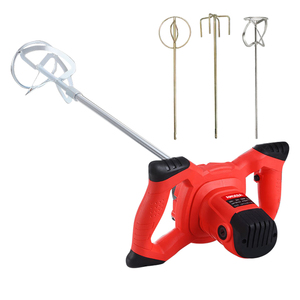




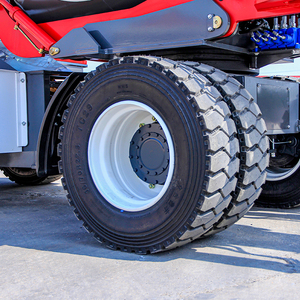



























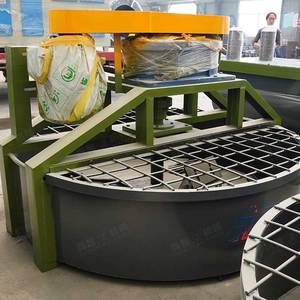

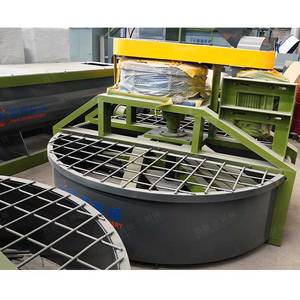



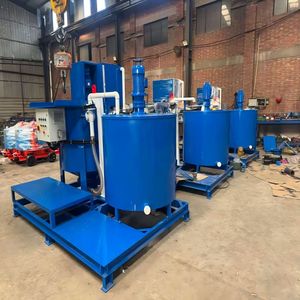


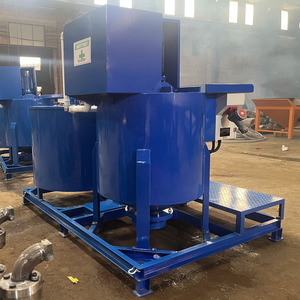


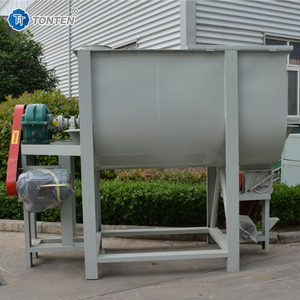

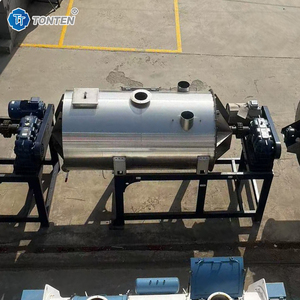


A concrete agitator can be classified into two main types based on its energy source: electric agitators and pneumatic agitators.
Electric concrete agitators use electric motors as their primary power source. They are commonly used in applications where electricity is readily available and can be easily connected. Electric concrete agitators are usually quiet during operation, provide stable and controllable agitation, and are relatively easy to maintain. In addition, some electric agitators have variable speed functions, which enable users to adjust the agitating speed according to different needs and materials.
Pneumatic concrete agitators, also known as air-powered or air-operated agitators, use compressed air as the power source, which is drawn from an air compressor. Pneumatic agitators are often used in situations where there is no electricity or where explosion-proof requirements must be met. Pneumatic agitators are lightweight and flexible, so they are easy to move and install. Moreover, they are suitable for harsh environments because they have fewer electrical components that can be corroded or damaged.
There are three main types of agitators based on the way the impeller is driven: propeller agitators, turbine agitators, and helical agitators.
Propeller agitators are also known as paddle agitators. The impeller has two to four blades, which can generate shear force to mix low to medium viscosity materials. Propeller agitators are usually mounted on the top or side of the shaft, which makes them easy to install and maintain.
Turbine agitators are also known as impeller agitators. The turbine-shaped impeller is used to mix various types of materials. They can handle higher viscosity liquids and offer better mixing performance. Turbine agitators are available in a variety of designs, including pitched blade turbines, flat blade turbines, and concave blade turbines.
Helical agitators have a corkscrew-like impeller. They are designed to handle high-viscosity fluids, non-Newtonian fluids, and multiphase fluids. Helical agitators can provide both axial flow and radial flow. They are suitable for applications that require gentle mixing without damaging the product structure.
In addition, there are also anchor agitators and magnetic agitators. The anchor agitator has a U-shaped blade, which is fixed at the bottom of the container. It can scrape the sticky materials on the container wall or bottom to ensure that the materials are mixed uniformly. Magnetic agitators have a magnetic coupling that connects the motor to the impeller. This design can prevent leakage and reduce the risk of contamination.
Capacity: Concrete agitators have different capacities. The most common capacities are 6m³, 8m³, 10m³, 12m³, 14m³, 16m³, 18m³, 20m³, 22m³, and 24m³. The capacity of the concrete agitator is determined by the amount of concrete it can transport. It is usually represented in cubic meters. Smaller agitators may have capacities of 4 to 6 cubic meters, while larger models can have capacities of 10, 12, or more cubic meters.
Speed: The speed at which the agitator drum rotates is an important specification. It is usually measured in revolutions per minute (RPM). The speed at which the drum rotates has an impact on the quality and workability of the concrete. It also affects the fuel efficiency and performance of the agitator. The speed at which the drum rotates is usually between 10 and 15 RPM.
Power source: Concrete agitators are powered by diesel or electric engines. Diesel engines are more powerful and are the most common power source for large concrete agitators. On the other hand, smaller models may have petrol or LPG engines. Electric motor-driven concrete agitators are usually used in smaller models.
Drum material: The material of the drum is usually made of steel. The drum is made of high-strength steel to withstand the continuous movement and pressure of the concrete. It is also corrosion-resistant to ensure durability.
Control systems: Most modern concrete agitators are equipped with advanced control systems, including remote control and digital display. These control systems allow operators to easily monitor and adjust the operation of the agitator.
Cleaning: After each use, the concrete agitator must be cleaned. Operators should thoroughly rinse the drum with water to remove any remaining concrete and residue. Regular cleaning of the concrete agitator can help prevent the build-up of hardened concrete and prolong the service life of the drum.
Inspection: Regular inspection of concrete agitators is an important part of maintenance. Operators should check for any signs of wear, damage, or corrosion on the drum, blades, and other components. If any problems are found, they should be repaired in a timely manner to ensure the safe operation of the agitator.
Lubrication: Greasing the moving parts of the concrete agitator is essential to ensure smooth operation and reduce friction and wear. This includes greasing the bearings, gears, and other lubrication points. Proper lubrication can help extend the service life of the agitator.
Storage: When not in use, it is important to store the concrete agitator properly. The agitator should be parked on a flat surface in a well-ventilated area. Protect it from direct sunlight and extreme weather conditions to avoid damage to the components. In addition, it is recommended to periodically start the agitator to keep the battery charged.
Concrete agitators are widely used in many industries and projects.
Concrete agitators are the key equipment for preparing, mixing, and transporting concrete in construction projects. They can be used in various construction scenarios, such as high-rise buildings, infrastructure projects, precast concrete factories, and road construction.
In mining and quarrying industries, concrete agitators can be used to mix and transport bulk materials, such as ores, minerals, and excavated materials. They are often used in ore beneficiation plants, mine sites, and open-pit mining projects.
Chemical plants and facilities can use concrete agitators to mix, agitate, and react chemical compounds. They are suitable for transporting various liquid chemicals, such as acids, alkalis, and solvents, etc.
In agriculture and food processing industries, concrete agitators can be used to mix animal feed, fertilizers, and other agricultural products. They are also suitable for mixing, processing materials, and transporting products in food processing plants.
In the energy and environmental protection sectors, concrete agitators can be used to mix and transport solid and liquid materials. For example, they can be used in biomass power plants, waste treatment facilities, and recycling centers.
Concrete agitators are widely used in the transportation and logistics industries. They can be used to transport bulk materials, containers, and goods in ports, warehouses, and distribution centers.
In addition to the above industries, concrete agitators can also be used in the following fields:
Choose a concrete agitator that will meet the specific needs of the project. Consider the intended use, the volume of concrete that will be transported, the terrain where it will be used, and the power source.
When choosing a concrete agitator, one should consider the type of concrete agitator that will meet the project's needs. There are two main types of concrete agitators, which are transit mixers and pan mixers. Transit mixers are ideal for large construction projects. They are well-suited for transporting large volumes of concrete over long distances. Transit mixers are also able to mix concrete while in transit to the construction site. Pan mixers, on the other hand, are more suitable for smaller projects. They are stationary mixers that are used to mix concrete at a central location. Pan mixers are ideal for projects that require a small volume of concrete or for projects with limited access to the construction site.
It is important to consider the size and capacity of the concrete agitator when choosing one for a project. Concrete agitators vary in size, with capacities ranging from 4 to 11 cubic meters. Larger capacities are more suitable for large-scale projects that require a high volume of concrete. On the other hand, smaller capacities are ideal for smaller projects that do not require as much concrete. It is important to choose a concrete agitator with the appropriate size and capacity to meet the project's needs.
When choosing a concrete agitator, it is important to consider the terrain where it will be used. Concrete agitators are designed for different types of terrain, such as urban areas, off-road sites, and rough terrain. It is important to choose a concrete agitator that is well-suited for the project's location and terrain.
Finally, it is important to consider the power source of the concrete agitator. Most concrete agitators are powered by diesel engines, which are well-suited for outdoor construction sites. Some models are also available with electric motors for projects that are located in indoor or enclosed spaces. It is important to choose a concrete agitator with the appropriate power source for the project's needs.
Q1: What is the standard size of a concrete mixer truck?
A1: The most common sizes of concrete mixer trucks are 8, 9, and 10 cubic yards. However, there are also smaller and larger sizes available. Sizes differ depending on the manufacturer as well as the truck's application.
Q2: How long does concrete last in a mixer?
A2: Concrete can last for up to 3 hours in a concrete mixer truck. However, it is important to understand that this time frame can vary, depending on factors like the temperature, humidity, and concrete mix design.
Q3: How often should the concrete of an agitator be washed?
A3: It is recommended that the concrete of an agitator be washed after each use. This will help to prevent the build-up of hardened concrete, making the cleaning process much easier and less time-consuming.
Q4: Can concrete mixer trucks pour in the rain?
A4: Yes, concrete mixer trucks can pour in the rain. However, it is very important to take extra precautions and prevent the water from getting into the concrete. This is because too much water can affect the concrete's quality and strength.